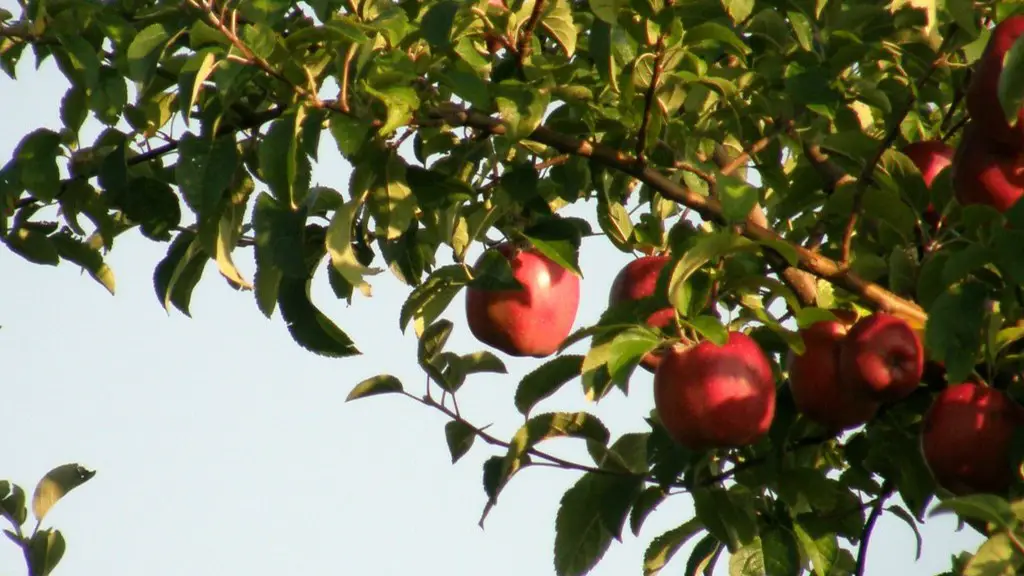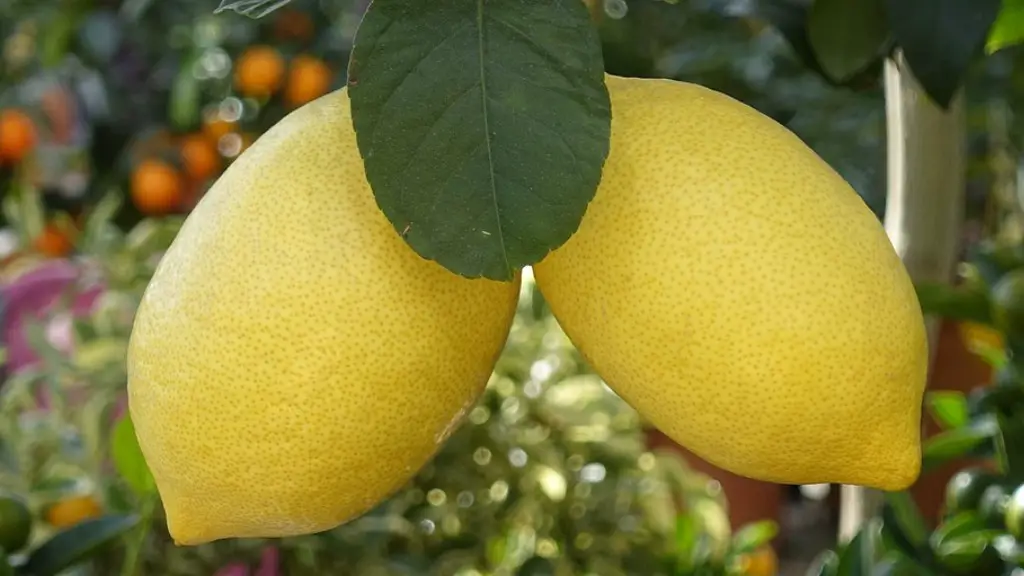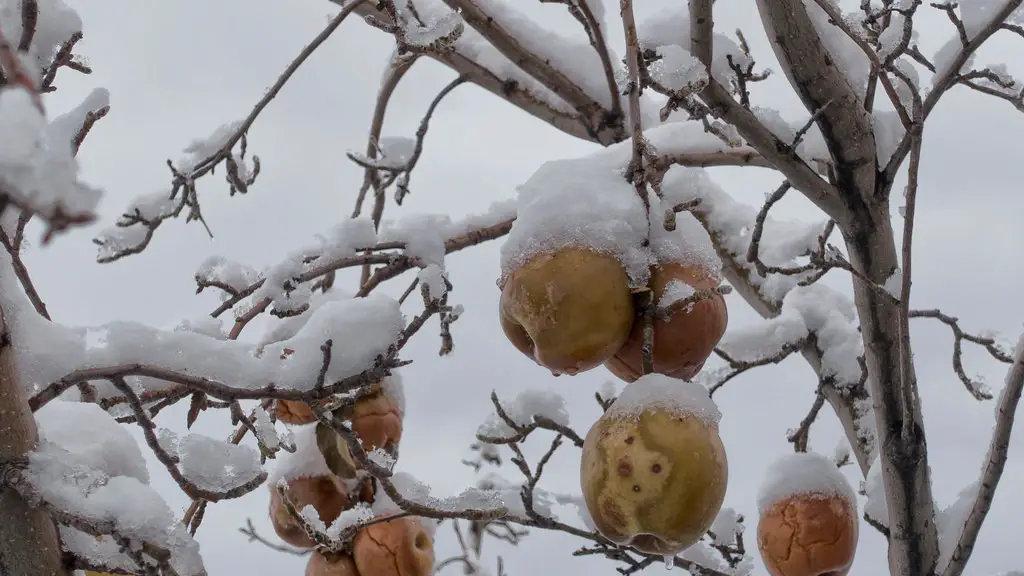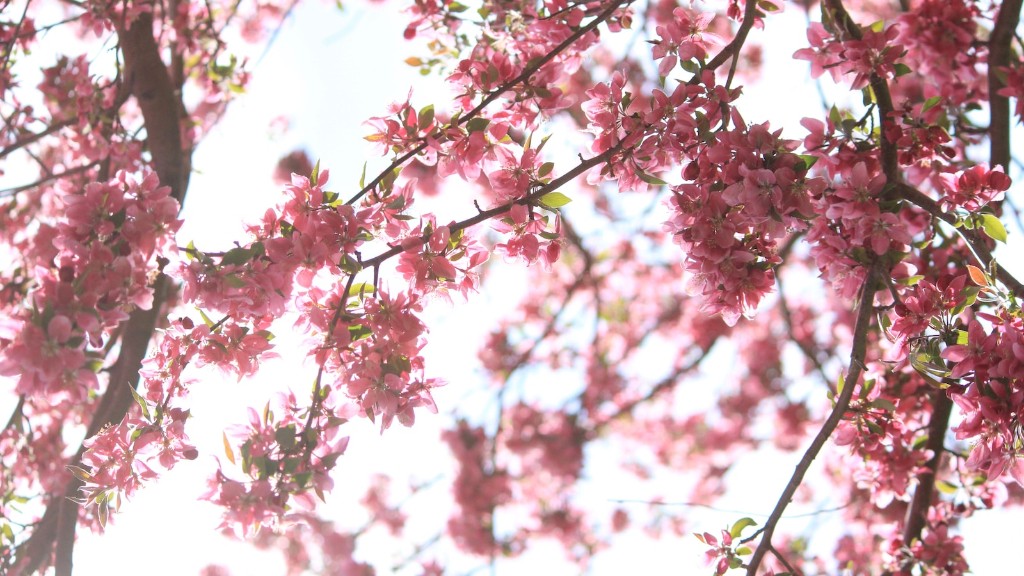When considering when to plant an apple tree, one must take into account particular factors such as the climate, soil composition, and the type of apple tree. Apple trees can be planted either in spring or fall, but the best time depends on where one lives and the type of apple tree one is planting. Generally, planting in early spring is the easiest and most successful time. It is when the soil is thawed and the temperatures have begun to normalize. Planting in the late fall is sometimes done, but it involves covering the entire tree to prevent freezing, so it is not recommended for the novice gardener.
In colder climates, apple trees should be planted at the same time as other fruit trees, from late March to early May. In warmer climates, apple trees should be planted in the fall; however, be careful as late frosts can still kill apple trees planted in the wrong season. It is best to take advice from a local nursery or gardening expert who will be familiar with the best planting times in a particular region.
To give an apple tree the best chance of successful growth, first the soil should be assessed. Preparing the ground is essential, and the soil should be tilled to the depth of a shovel blade and the area should be weed-free. Organic material can be added to the soil to increase drainage capabilities, especially in clay soils. It is also beneficial to apply a balanced, slow-release fertilizer to the soil prior to planting.
Once the soil is prepared and the tree is planted, regular watering is essential for the tree to develop properly. For the first few weeks after planting, the tree should be watered deeply, once or twice a week, to the point where water pools around the base of the tree. From then on, if the rain is sparse, supplemental watering should be done.
The tree should also be monitored throughout its development to ensure it is progressing in the right way. It is beneficial to prune the tree when it is young and make sure to watch out for any pests or diseases. Pest control and pruning at the right times will ensure it gets off to the best start and produces a good flood of apple blossom in the warmer months.
Location for Planting
Where an apple tree is planted is also important. Apple trees can be planted in sheltered corners to reduce the effects of wind damage, and if planted in a line, these trees can be arranged so that the tallest is at the back. Avoiding locations where heavy frost settles is also advised. It is also best to take advice from a local nursery or gardening expert who will be familiar with the best location in a particular region.
Tree Types
What type of apple tree to plant also needs to be taken into account. Popular varieties of apples include Golden Delicious, Braeburn, Granny Smith, Cox’s Orange Pippin, and Pink Lady. However, different types of apples grow better in different climates and areas. A local nursery will be able to advise on the right type of apple tree to ensure optimum yield and quality.
Preparing the Area
Preparing the area around the tree is important to ensure a healthy tree and plenty of apples. Mulching the area helps to protect the tree from weeds and retain vital moisture. Organic mulch is ideal as it improves soil health and retains moisture. Additionally, overhanging branches can be pruned, so that other plants and weeds around the tree are getting enough sun.
Care and Maintenance
As well as preparing the soil, watering the tree, and monitoring its growth, there are other elements to consider for apple tree care including pest control, pruning, and protection from diseases. Applying sprays, if necessary, in early spring and late summer can help to fend off pests, while pruning should be done after the fruit has been harvested, so that new growth and flowers are encouraged the next season. Vigilant monitoring of the tree is important, as any disease needs to be caught early on in order to save the tree.
Harvesting Apples
After the tree has been planted, watered, and cared for, the apples are ready for harvesting. Most apple varieties are ready to pick from the end of summer to early autumn. The apples should be checked for signs of damage, pests, and ripeness. If they look good, they can be picked and any that fall early should be collected straight away.
Uses of Apples
Once the apples are ready to harvest, it’s time to think about what to do with them. Apples can be enjoyed either fresh or processed and preserved. They can be stewed, juiced, made into sauces, dried and made into cakes, or frozen in slices for later. If they are to be kept, they should be stored in single layers and placed in perforated plastic bags in the refrigerator, avoiding getting them wet.
Importance of Apple Trees
Aside from being an enjoyable and useful fruit, apple trees are also important for the environment. Many birds, as well as other animals, will use the trees for food, nesting, and protection. Bees also use apple trees for nectar and pollination, making them an important part of the environment.
Conclusion
When planting an apple tree, there are many things to consider, including when to plant, what type of tree to select, and how to care for it. Taking the right advice and being careful with location, type, and care, can help ensure a successful apple tree.



